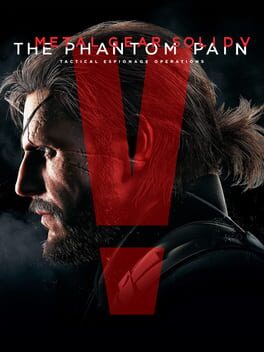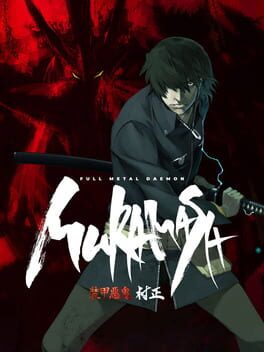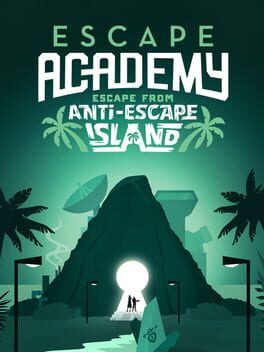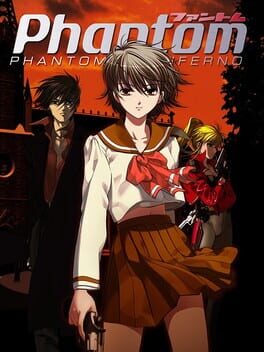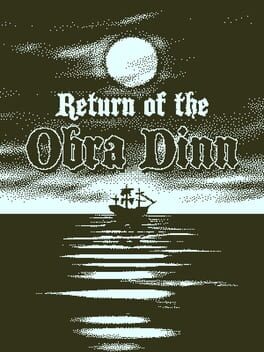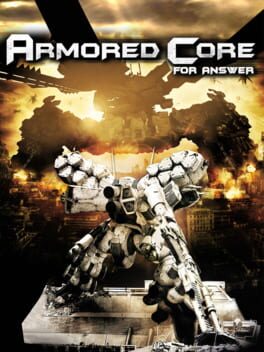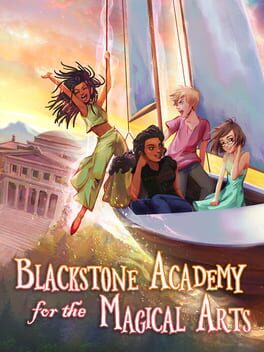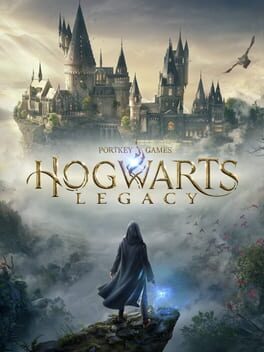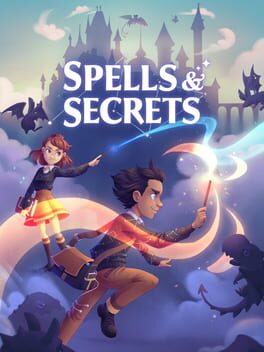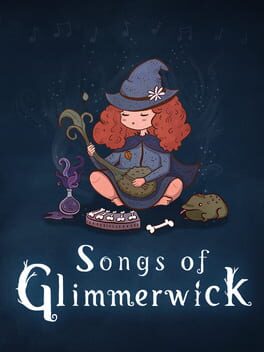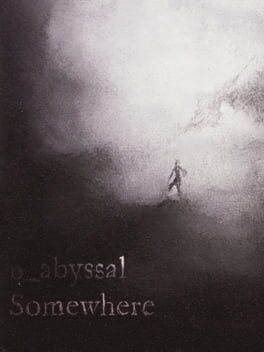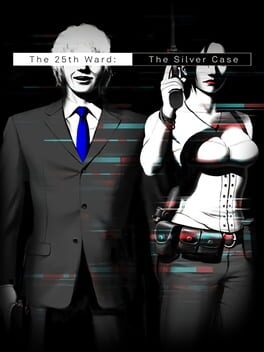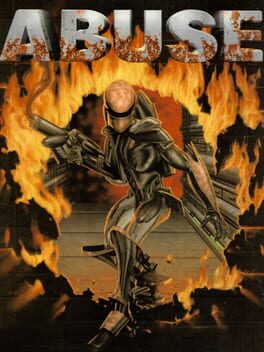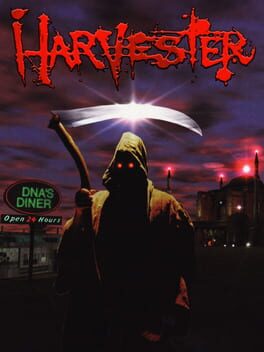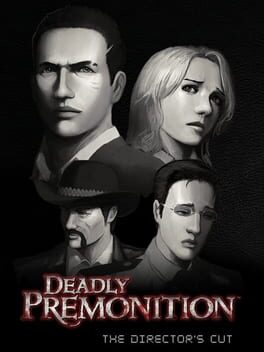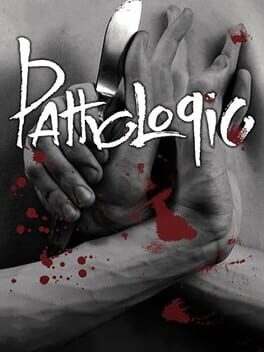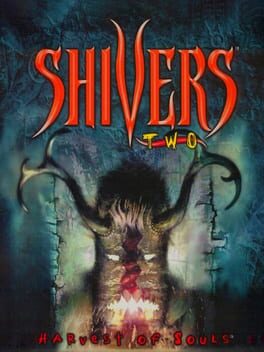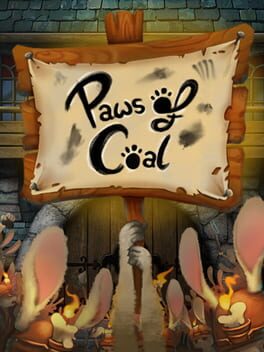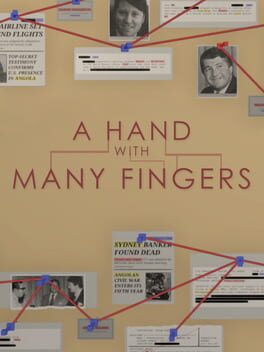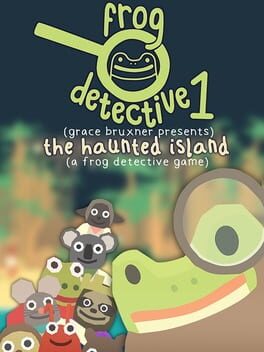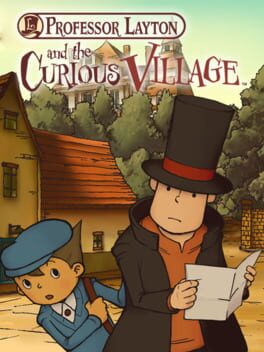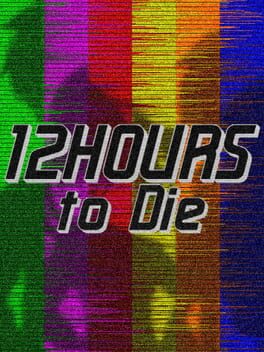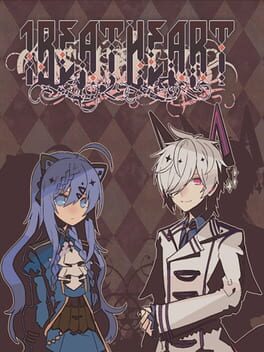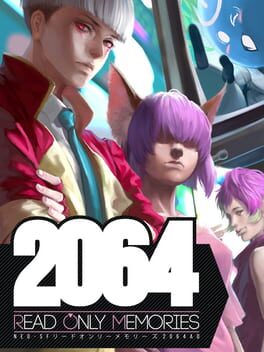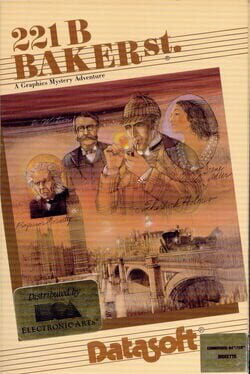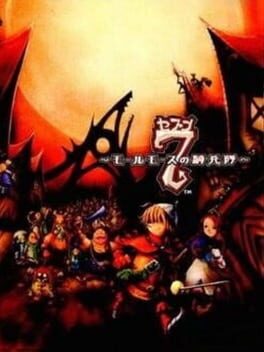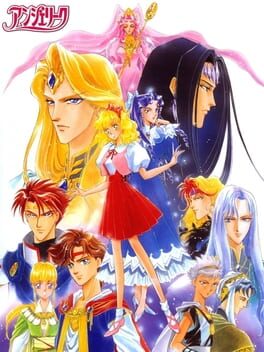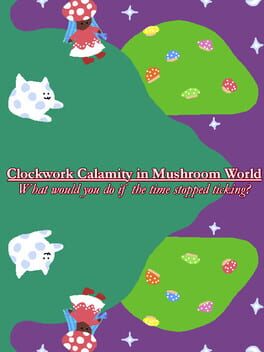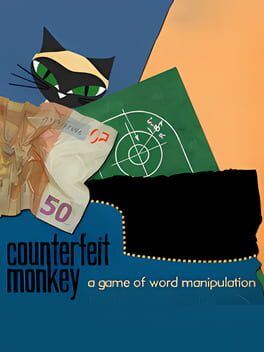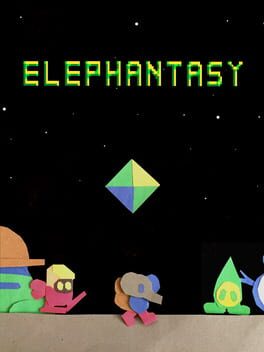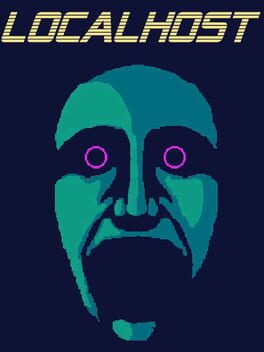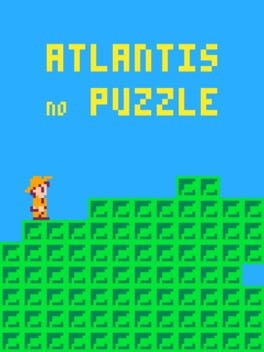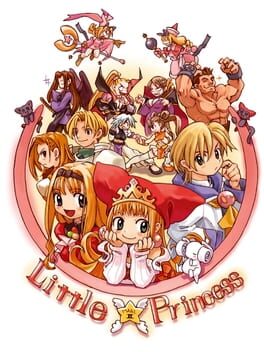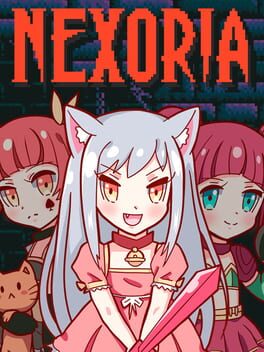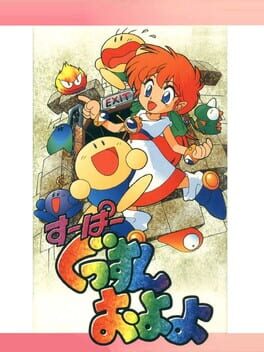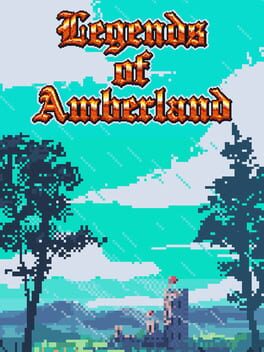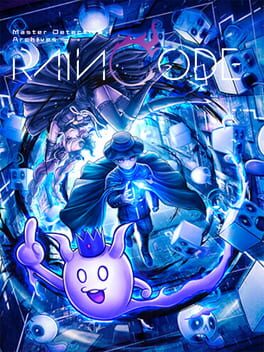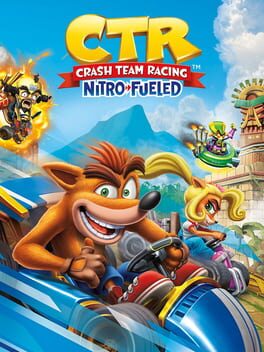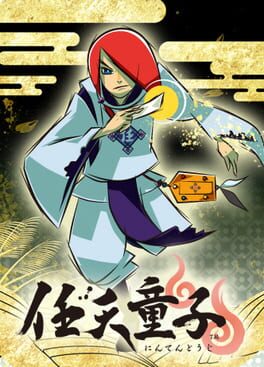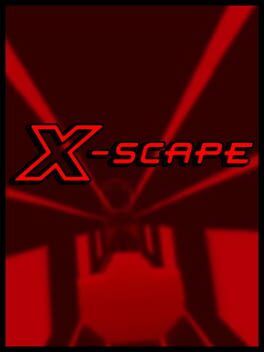134 reviews liked by Edin
This review contains spoilers
Resimde görmüş olduğunuz kahramanımız Cezalandırılmış Yılan kod adlı Cenk Nefretedeni korumak için yerine geçen Tabip Onbaşı Can. Dış Cennet düştüğünde Büyük Patron, Dış Cenneti geri kursun diye paravan bir dış cennet kurdu. Sol kolunu yitirse de protez bir kol ile Afganistanda işgalci Ruslara karşı Müslüman kardeşlerimizle omuz omuza direnmiş, Orta Afrikadaki sömürgeci İngilizlere kan kusturmuştur. Ancak yerli ve milli kahramanlarımız bilinmiyor. Lütfen değerlerimizi unutmayalım.
Gnosia
2019
Setsu: We have factual evidence that SQ is Gnosia [Definite Enemy]
Yuriko: I support Setsu's statement, you all should as well [Seek Agreement]
Raqio: So, logically we should vote for SQ immedia-
SQ: CURSE OF RA 𓀀 𓀁 𓀂 𓀃 𓀄 𓀅 𓀆 𓀇 𓀈 𓀉 𓀊 𓀋 𓀌 𓀍 𓀎 𓀏 𓀐 𓀑 𓀒 𓀓 𓀔 𓀕 𓀖 𓀗 𓀘 𓀙 𓀚 𓀛 𓀜 𓀝 𓀞 𓀟 𓀠 𓀡 𓀢 𓀣 𓀤 𓀥 𓀦 𓀧 𓀨 𓀩 𓀪 𓀫 𓀬 𓀭 𓀲 𓀳 𓀴 𓀵 𓀶 𓀷 𓀸 𓀹 𓀺 𓀻 𓀼 𓀽 𓀾 𓀿 𓁀 𓁁 𓁂 𓁃 𓁄 𓁅 𓁆 𓁇 𓁈 𓁉 𓁊 𓁋 𓁍 𓁎 𓁏 𓁐 𓁑
Yuriko: Actually, I think I saw Raqio vent [Exaggerate]
Setsu: Raqio is mad sus lol [Obfuscate]
Raqio was sent to cold sleep
Yuriko: I support Setsu's statement, you all should as well [Seek Agreement]
Raqio: So, logically we should vote for SQ immedia-
SQ: CURSE OF RA 𓀀 𓀁 𓀂 𓀃 𓀄 𓀅 𓀆 𓀇 𓀈 𓀉 𓀊 𓀋 𓀌 𓀍 𓀎 𓀏 𓀐 𓀑 𓀒 𓀓 𓀔 𓀕 𓀖 𓀗 𓀘 𓀙 𓀚 𓀛 𓀜 𓀝 𓀞 𓀟 𓀠 𓀡 𓀢 𓀣 𓀤 𓀥 𓀦 𓀧 𓀨 𓀩 𓀪 𓀫 𓀬 𓀭 𓀲 𓀳 𓀴 𓀵 𓀶 𓀷 𓀸 𓀹 𓀺 𓀻 𓀼 𓀽 𓀾 𓀿 𓁀 𓁁 𓁂 𓁃 𓁄 𓁅 𓁆 𓁇 𓁈 𓁉 𓁊 𓁋 𓁍 𓁎 𓁏 𓁐 𓁑
Yuriko: Actually, I think I saw Raqio vent [Exaggerate]
Setsu: Raqio is mad sus lol [Obfuscate]
Raqio was sent to cold sleep
Drakengard
2003
Anomaly Agent
2024
Phantom of Inferno
2000
“Captain! Open the door…”
“Kick it in!”
“…lest we break it down… and take more than those shells.”
“You bastards may take… exactly what I give you!”
With that opening gunshot, I knew I had stumbled upon something truly great.
How is it that after over 30 years of adventure games, Return of the Obra Dinn nailed the formula and continues to this day to be the definitive detective mystery game? It’s actually deceptively simple; while its predecessors were often games built around mysteries, Return of the Obra Dinn is a mystery built around a game.
You see, most detective-mystery games attempt to adhere to reality, or at least some form of fictionalized reality. Investigators stumble upon the crime scene, sweep the crime scene to collect evidence, analyze the evidence in a lab, interrogate witnesses, and then arrest suspects. In other words, it’s your usual CSI drama-like that does its best to recontextualize real life crime fighting techniques into video game mechanics, and this can lead to a slew of difficulties and frustrations on the player’s end, such as being railroaded from case to case, brute forcing solutions from an already provided answer bank, and transforming complicated logical reasoning and deduction into what is more or less a streamlined experience that consists of answering several simple multiple choice questions.
Return of the Obra Dinn doesn’t do any of that.
The year is 1807, and the Obra Dinn has just mysteriously drifted back into port after being declared lost at sea five years ago. You are an insurance agent, woken up on an otherwise uneventful morning to piece together everything that’s happened to the 60 lost souls of the Obra Dinn and determine the damages to charge whoever is held responsible for this whole mess. You’ve been sent a mostly empty volume titled Return of the Obra Dinn: A Catalogue of Adventure and Tragedy as well as a mysterious pocket watch named the “Memento Mortem.” There’s no one left on the ghost ship to arrest or interrogate, and the crime scene is years old by now; it’s just you, armed with a magical timepiece, left to your own devices to fill out as much of this tragic and inky tale as you so desire.
Obra Dinn keeps the questions simple: who is whom, and how did they die? Because the questions are the same for all fates, the game doesn’t lead you down any obvious lines of reasoning. Furthermore, there are tons of potential answers for each of the two main questions: you have every name from the ship’s manifest to insert as a potential identity, and a slew of verbs that could be inserted for a death, ranging from the classics “Clubbed” and “Shot” to the more out there “Poisoned” and “Eaten.” That’s right, you can write in cannibalism as a cause of death on the Obra Dinn.
As the insurance adjuster, you use the Memento Mortem to travel back to the exact time of crisis; it is aptly named “Remember Death” for a reason. You’ll often get a few seconds of audio leading right up to the moment of death, and then you’re immediately transported to the exact frozen moment in time, like a still diorama of doom, where you can examine the minute details in-person. As mentioned before, the book gives you little guidance regarding exact fates and identities, and it’s up to you to draw the connections. Lucas Pope pulls out every trick in the book: accents, nationalities, clothing, occupations, tools, items of personage, who they’re often around, even the continuity of the narrative itself. It’s pure deductive reasoning with little to no hand-holding; you’ll often have to find specific clues from one scene and tie it back to characters in a completely different scene, and not only spotting the minute details, but linking them together, is crucial to determining the fate of all 60 souls.
Let me take this time to just say it; Obra Dinn slays in presentation. The sound design is immaculate; the voice acting perfectly captures the tone and emotions across the entire cast, much less capturing their nationalities and speech patterns, and often thrown into the mix are a cornucopia of sound effects from squeaking, slashing, the sloshing of waves and the whistling of wind, and various cries of pain, anguish, and despair. The soundtrack (also composed by Lucas Pope) accentuates these moments too. I’ll never forget the clanging bells from Soldiers of the Sea signifying an approaching calamity, or the ominous wind instrumental melody from A Bitter Cold hinting at a lurking danger, and especially the abrupt baritone horns of The Doom alerting the player that shit just got real. Finally, who could forget the iconic 1-bit art style of the game, a “dither-punk” stylistic choice that inspired many classic Macintosh-esque graphics for games to come? Not only does it serve the practical purpose of letting Pope illuminate exactly what details he wants to highlight (mainly, the expressive faces of the passengers and crew of the Obra Dinn, as well as their colorful belongings set in scenes of harrowing jeopardy) while giving him room to leave out other extraneous details, including an almost lack of text outside of the book, it plays extremely well to the lean of a gothic and macabre tale of a ship lost at sea.
An understated but nevertheless crucial strength of this game to aid the brilliant presentation is that Lucas Pope understands how to use volume swells. To elaborate upon this, think about how much of popular music has learned to emphasize loud-soft dynamics in songwriting; the softer the build-up, the louder the climax becomes. A good example of this in classic video games is in Shadow of the Colossus, where Wander’s trek to each colossi is accompanied by practical silence with the exception of environmental noises and Agro’s hooves, leading to an anticipation track when Wander first stumbles upon the Colossi and then exploding into an epic battle track as he scales upon the Colossi’s body.
Obra Dinn has another fantastic translation of this idea; in the “present-day” overworld upon the ghost ship, all you hear is the call of the sea and the creaking of the ship’s planks. As soon as you find a body, the stopwatch pops open, plays a quick string melody as you spiral into the memory, and the few seconds of audio as a build-up to the time of death play out until the grisly, painted scene of death suddenly appears with the abrupt accompaniment of horns, strings, and bells. These scenes never outstay their welcome either; for the first time you stumble upon each new diorama, the player spends 60 seconds in the memory taking in all the new details, until the game fades out, pulls you into the book to form the outline, and then either opens a door in the distance so you can continue your search or leads you to the next body contained within a death diorama to find the next tragic happening. Certainly, it’s a pleasant and welcome surprise from so many games that just play the same droning background music over and over while players are performing the “same” task of investigating or working all the logic out.
Going back to the mechanics of Return of the Obra Dinn, there’s a degree of player control that I think is simply not present in other detective games. I’ve already mentioned that the game doesn’t hold your hand when it comes to figuring out fates and identities, but this increased player control is also due to the structure of the game itself. After solving a few of the opening fates, and opening new doors thanks to open doors within the memories themselves, you’re more or less free to explore around the Obra Dinn as you please and tackle whatever memories you want in whichever order you desire. In fact, the game’s reliance upon this often disconnected narrative via traveling back and forth through different memories is critical to working out the timing of the game’s events and forming the connections necessary to deduce whom is present at what time, ultimately leading to their respective demises. It’s also a nice-built in feature that you don’t even need to solve every fate to end the game; you can step off the Obra Dinn and head back home at any time if you ever get fed up. That said, the insurance report at the end of the game does vary depending on how you marked fates along your investigation, which means there is an incentive to actually try and perform your damn duty.
To add on to the above, Obra Dinn has several nods to player perspective and player agency that elevate this far above any other detective game I’ve ever played. Lucas Pope has mentioned previously in interviews about this degree of ambiguity that exists in detective work; multiple people can look at the same scene, but come away with different conclusions based off of the different clues that they notice and the different ways that their brain works out the logic and reasoning. Pope wanted to implement this into the game mechanics as well, and included some degree of leeway when it comes to putting down certain fates. Because many passengers and crew die off screen in the game (and in fact their bodies are often lost between the scenes of death and cannot be recreated for one reason or another), and because figuring out every exact fate of 60 souls is quite challenging, players often have to rely on educated guesses and process of elimination to figure out how everything exactly went down. Thus, Pope decided to allow multiple “acceptable” answers for certain circumstances because honestly, who’s he to say that this player’s interpretation is more correct than the other?
Even more viscerally shocking to me is that the game is innately aware of who you are and what role you play, and has multiple nods to this throughout the game. I can’t go into too much detail since that would quickly enter spoiler territory, but needless to say, your actions do have consequences upon the final findings and ending of the frame tale (both in the form of the insurance report and what’s revealed to you thereafter), and the game is extremely self-aware of how omnipresent death plays a role in your investigation and how without it, your perception of events would be much different. I also at this time want to point out that Lucas Pope puts a lot of emphasis in toolkits, particularly calling back to his time spent at Naughty Dog developing GUI tools. Pope then proceeds to both play this emphasis straight and subvert this at times; sure, the book is great at marking down the exact location of bodies, but what happens when the bodies can’t be recovered? It’s extremely helpful to zoom in on people within the frozen memories and then press Tab to immediately lock in on their location within the sketch, but what do you do when the person is so far away in the background of the memory that zooming in doesn’t lock onto that identity? By doing this, Pope utilizes the presence of the built-in tools to their maximum capacity, through both forcing reliance upon the tools and reliance upon other means of discovery when the tools are subverted.
Lastly, I’ve been trying to figure out exactly what makes Obra Dinn a goldmine for so many memorable moments. I’ve already discussed the presentation and the strong presence of player control/perspective/agency that only a video game could really accomplish, but there’s two additional reasons I want to walk through at this time. Firstly, Obra Dinn’s anachronistic narrative sets it up for success in a few ways. Of course, there’s the degree of player control that this allows, thanks to letting players walk through most memories however they wish. We’ve also discussed the presence of continuity serving as a usable clue itself; that is, if a character is dead in a prior scene, then chronologically, that identity should not be present later on, and so on so forth. However, we haven’t talked about the power that disjointed story-telling has narratively, in that twists and sudden shifts in plot development feel much more natural and built-in.
To further elaborate, let's consider the cold opening of this game, where a few men bang on the captain’s door before one is unceremoniously shot in cold blood. This scene does several important things; firstly, it’s a sharp contrast from the peaceful and quiet beginning as you obtain your magical pocketwatch and stumble upon the rotting and decaying bones of the “first” victim, and in doing so, it immediately grabs your attention. Secondly, it introduces a flurry of new characters and terms in the form of “MacGuffins” that are most certainly relevant and just known to the cast at this point, but to an outsider like you, won’t make any sense at all. Think of it like a reverse Chekhov’s Gun; it’s mentioned in passing often at the chronological end (after all, the timing of deaths within death scenes means you’ll generally be traveling backwards) and its relevance has already been established, so you don’t have to wonder about whether or not it’s important. In fact, it provides a degree of investment to figure out exactly what it means and how it all played out. Finally, these scenes often take place in altered environments (i.e. what the Obra Dinn looked like 5 years ago) and slowly introduce and naturally funnel you towards more and more death as events unfold, with unlocked doors and recently deceased bodies giving you further access to more parts of the ship and more memories. By doing so, there’s an actual sense of progression alongside the sense of satisfaction from filling out the outlined narrative.
Speaking of progression and satisfaction, that brings us to the last additional reason, namely via investment. The game’s lack of hand-holding and overall difficulty are a huge reason why, as well as the focus on personal growth versus systems growth; the systems and mechanics present at the beginning of the game are the exact same as those at the end of the game, and the only thing that has evolved is the player’s knowledge of the fates and workings of the ship. Heavily aiding to both the player’s growth and the difficulty of the game is the “rule of three” mechanic used to validate fates. It strikes a certain balance; Pope wanted a mechanic that would put the player at ease for successfully figuring something out (i.e. not letting the aforementioned ambiguity rule over the whole process) but at the same time, not be so simple as to allow for the game to railroad players into certain choices or obvious brute-forcing. As such, the player must correctly fill out three sets of identities and fates before the book makes these choices permanent and congratulates the player upon their work. The “Eureka!” moments garnered from this system from correctly deducing the story are just as important to me as the “Holy shit!” moments that I experienced from the story unfolding itself. Is it a perfect system? Of course not; you could argue that the mechanic can be abused if you’re very sure about two particular fates and not so sure about the third to allow for more guesswork, and that the mechanic is “contrived” like much of this game. Nevertheless, I appreciate that this margin of error exists as a concession to the player and a good in-between for rewarding players with self-satisfaction while providing an adequate challenge despite providing more than adequate tools to meet the challenge.
A few closing thoughts: for years, many players and developers have pointed out that there’s a glaring dissociation between game mechanics and narrative. That is, we tend to view game mechanics and narratives as separate, and in fact in many cases, mutually exclusive. That’s why in many longer games, you’ll often have chunks of extended gameplay in the form of combat or puzzles, and then chunks of extended storytelling, often in the form of cutscenes, dialogue, text boxes, etc. This works just fine for longer run-times in the span of 20 - 100+ hours, but it would absolutely ruin the pacing of shorter games to switch players back and forth between exclusive gameplay and exclusive storytelling, and smaller indie studios often don’t have the budget or resources to maximize these aspects separately.
I’ve been searching for many examples of games where gameplay and storytelling are married effectively, and there’s a few that come to my mind such as Journey, Ghost Trick, Shadow of the Colossus, Outer Wilds, and so on so forth. Needless to say, I’m both embarrassed and happy to report that one of the greatest examples has been right under my nose the entire time. There’s no separation between Return of the Obra Dinn’s gameplay and narrative, and at no point is there exclusive storytelling or exclusive gameplay. Simply put, interaction with the narrative is the gameplay.
All of the previous points come back into play. The personal growth is learning more about the story. The logic and deductive reasoning into figuring out identities and fates are the core gameplay mechanics. The focus on eerie and often grotesque visuals and expressive sound effects and voice acting are integral to piecing together the Obra Dinn’s story. The very presence of death throughout the narrative is the only thing allowing you to even solve these fates in the first place, because without the Memento Mortem as a game mechanic allowing you to travel back to the exact time of death, you’d just be some insurance adjuster who walked onto an empty ship, saw a locked door and flies swarming around a pile of bones, and walk straight back to the rowboat to fabricate at best, a creepypasta of how 60 people were mysteriously lost at sea. Gameplay and story are inexorably intertwined, and one aspect would cease to exist or be severely crippled without the other half.
Time to address the elephant in the room: for a story-heavy game, is the story exceptional? I wouldn’t necessarily say so, as if I were to compare this to exceptional works of fiction in other mediums (say, a book like Moby Dick), I’d say that Obra Dinn’s details aren’t quite as elaborate nor as fanciful.
But Return of the Obra Dinn isn’t trying to be a book, or a movie, or even a museum installation. It’s trying to be a video game, and it embraces the strengths of the interactive medium so well that I honestly couldn’t care if the story isn’t as ambitious or beautifully scripted and its prose doesn’t match with even contemporary acclaimed writers. Frankly speaking, Return of the Obra Dinn doesn't just elevate the bar for detective games, it blows the bar off the rail and becomes something much more. I’ve been playing through a few other detective games recently, and none of them even came close to holding a candle to the grandmaster itself. That, and a lot of free time (and maybe a bit of nostalgia and passion) led me to reference a few analysis and interview videos and type this all up in an afternoon or so. It'll all make sense soon, but just know this: the narrative might not necessarily be exceptional, but I’d damn well say that this narrative is exceptionally told.
My one video gaming regret is that I will never be able to experience this again for the first time. As a result, I have resorted to recommending this to virtually everyone I know with no reservations and buying my friends copies of Return of the Obra Dinn so I can be there when they too, experience the frustrations and satisfactions of the medium in its rawest form for the first time. I really don’t know what else to say; I’ll vouch for this game in every waking moment of my life, and at this point, I'm convinced that I’ll probably buy anything Lucas Pope makes day one with no exceptions. If you want a game that will challenge your perception of what video games can be and accomplish, I don’t think you can do much better than this.
Sources referenced:
Return of the Obra Dinn Thinks Differently About Narrative
How Return of the Obra Dinn Works
How Return of the Obra Dinn Makes You An Honest Detective
Rumination Analysis on Return of the Obra Dinn
Lucas Pope on 3 years of Return of the Obra Dinn, and what's next
Noclip Podcast #07 - Lucas Pope
Return of the Obra Dinn Steam Page
“Kick it in!”
“…lest we break it down… and take more than those shells.”
“You bastards may take… exactly what I give you!”
With that opening gunshot, I knew I had stumbled upon something truly great.
How is it that after over 30 years of adventure games, Return of the Obra Dinn nailed the formula and continues to this day to be the definitive detective mystery game? It’s actually deceptively simple; while its predecessors were often games built around mysteries, Return of the Obra Dinn is a mystery built around a game.
You see, most detective-mystery games attempt to adhere to reality, or at least some form of fictionalized reality. Investigators stumble upon the crime scene, sweep the crime scene to collect evidence, analyze the evidence in a lab, interrogate witnesses, and then arrest suspects. In other words, it’s your usual CSI drama-like that does its best to recontextualize real life crime fighting techniques into video game mechanics, and this can lead to a slew of difficulties and frustrations on the player’s end, such as being railroaded from case to case, brute forcing solutions from an already provided answer bank, and transforming complicated logical reasoning and deduction into what is more or less a streamlined experience that consists of answering several simple multiple choice questions.
Return of the Obra Dinn doesn’t do any of that.
The year is 1807, and the Obra Dinn has just mysteriously drifted back into port after being declared lost at sea five years ago. You are an insurance agent, woken up on an otherwise uneventful morning to piece together everything that’s happened to the 60 lost souls of the Obra Dinn and determine the damages to charge whoever is held responsible for this whole mess. You’ve been sent a mostly empty volume titled Return of the Obra Dinn: A Catalogue of Adventure and Tragedy as well as a mysterious pocket watch named the “Memento Mortem.” There’s no one left on the ghost ship to arrest or interrogate, and the crime scene is years old by now; it’s just you, armed with a magical timepiece, left to your own devices to fill out as much of this tragic and inky tale as you so desire.
Obra Dinn keeps the questions simple: who is whom, and how did they die? Because the questions are the same for all fates, the game doesn’t lead you down any obvious lines of reasoning. Furthermore, there are tons of potential answers for each of the two main questions: you have every name from the ship’s manifest to insert as a potential identity, and a slew of verbs that could be inserted for a death, ranging from the classics “Clubbed” and “Shot” to the more out there “Poisoned” and “Eaten.” That’s right, you can write in cannibalism as a cause of death on the Obra Dinn.
As the insurance adjuster, you use the Memento Mortem to travel back to the exact time of crisis; it is aptly named “Remember Death” for a reason. You’ll often get a few seconds of audio leading right up to the moment of death, and then you’re immediately transported to the exact frozen moment in time, like a still diorama of doom, where you can examine the minute details in-person. As mentioned before, the book gives you little guidance regarding exact fates and identities, and it’s up to you to draw the connections. Lucas Pope pulls out every trick in the book: accents, nationalities, clothing, occupations, tools, items of personage, who they’re often around, even the continuity of the narrative itself. It’s pure deductive reasoning with little to no hand-holding; you’ll often have to find specific clues from one scene and tie it back to characters in a completely different scene, and not only spotting the minute details, but linking them together, is crucial to determining the fate of all 60 souls.
Let me take this time to just say it; Obra Dinn slays in presentation. The sound design is immaculate; the voice acting perfectly captures the tone and emotions across the entire cast, much less capturing their nationalities and speech patterns, and often thrown into the mix are a cornucopia of sound effects from squeaking, slashing, the sloshing of waves and the whistling of wind, and various cries of pain, anguish, and despair. The soundtrack (also composed by Lucas Pope) accentuates these moments too. I’ll never forget the clanging bells from Soldiers of the Sea signifying an approaching calamity, or the ominous wind instrumental melody from A Bitter Cold hinting at a lurking danger, and especially the abrupt baritone horns of The Doom alerting the player that shit just got real. Finally, who could forget the iconic 1-bit art style of the game, a “dither-punk” stylistic choice that inspired many classic Macintosh-esque graphics for games to come? Not only does it serve the practical purpose of letting Pope illuminate exactly what details he wants to highlight (mainly, the expressive faces of the passengers and crew of the Obra Dinn, as well as their colorful belongings set in scenes of harrowing jeopardy) while giving him room to leave out other extraneous details, including an almost lack of text outside of the book, it plays extremely well to the lean of a gothic and macabre tale of a ship lost at sea.
An understated but nevertheless crucial strength of this game to aid the brilliant presentation is that Lucas Pope understands how to use volume swells. To elaborate upon this, think about how much of popular music has learned to emphasize loud-soft dynamics in songwriting; the softer the build-up, the louder the climax becomes. A good example of this in classic video games is in Shadow of the Colossus, where Wander’s trek to each colossi is accompanied by practical silence with the exception of environmental noises and Agro’s hooves, leading to an anticipation track when Wander first stumbles upon the Colossi and then exploding into an epic battle track as he scales upon the Colossi’s body.
Obra Dinn has another fantastic translation of this idea; in the “present-day” overworld upon the ghost ship, all you hear is the call of the sea and the creaking of the ship’s planks. As soon as you find a body, the stopwatch pops open, plays a quick string melody as you spiral into the memory, and the few seconds of audio as a build-up to the time of death play out until the grisly, painted scene of death suddenly appears with the abrupt accompaniment of horns, strings, and bells. These scenes never outstay their welcome either; for the first time you stumble upon each new diorama, the player spends 60 seconds in the memory taking in all the new details, until the game fades out, pulls you into the book to form the outline, and then either opens a door in the distance so you can continue your search or leads you to the next body contained within a death diorama to find the next tragic happening. Certainly, it’s a pleasant and welcome surprise from so many games that just play the same droning background music over and over while players are performing the “same” task of investigating or working all the logic out.
Going back to the mechanics of Return of the Obra Dinn, there’s a degree of player control that I think is simply not present in other detective games. I’ve already mentioned that the game doesn’t hold your hand when it comes to figuring out fates and identities, but this increased player control is also due to the structure of the game itself. After solving a few of the opening fates, and opening new doors thanks to open doors within the memories themselves, you’re more or less free to explore around the Obra Dinn as you please and tackle whatever memories you want in whichever order you desire. In fact, the game’s reliance upon this often disconnected narrative via traveling back and forth through different memories is critical to working out the timing of the game’s events and forming the connections necessary to deduce whom is present at what time, ultimately leading to their respective demises. It’s also a nice-built in feature that you don’t even need to solve every fate to end the game; you can step off the Obra Dinn and head back home at any time if you ever get fed up. That said, the insurance report at the end of the game does vary depending on how you marked fates along your investigation, which means there is an incentive to actually try and perform your damn duty.
To add on to the above, Obra Dinn has several nods to player perspective and player agency that elevate this far above any other detective game I’ve ever played. Lucas Pope has mentioned previously in interviews about this degree of ambiguity that exists in detective work; multiple people can look at the same scene, but come away with different conclusions based off of the different clues that they notice and the different ways that their brain works out the logic and reasoning. Pope wanted to implement this into the game mechanics as well, and included some degree of leeway when it comes to putting down certain fates. Because many passengers and crew die off screen in the game (and in fact their bodies are often lost between the scenes of death and cannot be recreated for one reason or another), and because figuring out every exact fate of 60 souls is quite challenging, players often have to rely on educated guesses and process of elimination to figure out how everything exactly went down. Thus, Pope decided to allow multiple “acceptable” answers for certain circumstances because honestly, who’s he to say that this player’s interpretation is more correct than the other?
Even more viscerally shocking to me is that the game is innately aware of who you are and what role you play, and has multiple nods to this throughout the game. I can’t go into too much detail since that would quickly enter spoiler territory, but needless to say, your actions do have consequences upon the final findings and ending of the frame tale (both in the form of the insurance report and what’s revealed to you thereafter), and the game is extremely self-aware of how omnipresent death plays a role in your investigation and how without it, your perception of events would be much different. I also at this time want to point out that Lucas Pope puts a lot of emphasis in toolkits, particularly calling back to his time spent at Naughty Dog developing GUI tools. Pope then proceeds to both play this emphasis straight and subvert this at times; sure, the book is great at marking down the exact location of bodies, but what happens when the bodies can’t be recovered? It’s extremely helpful to zoom in on people within the frozen memories and then press Tab to immediately lock in on their location within the sketch, but what do you do when the person is so far away in the background of the memory that zooming in doesn’t lock onto that identity? By doing this, Pope utilizes the presence of the built-in tools to their maximum capacity, through both forcing reliance upon the tools and reliance upon other means of discovery when the tools are subverted.
Lastly, I’ve been trying to figure out exactly what makes Obra Dinn a goldmine for so many memorable moments. I’ve already discussed the presentation and the strong presence of player control/perspective/agency that only a video game could really accomplish, but there’s two additional reasons I want to walk through at this time. Firstly, Obra Dinn’s anachronistic narrative sets it up for success in a few ways. Of course, there’s the degree of player control that this allows, thanks to letting players walk through most memories however they wish. We’ve also discussed the presence of continuity serving as a usable clue itself; that is, if a character is dead in a prior scene, then chronologically, that identity should not be present later on, and so on so forth. However, we haven’t talked about the power that disjointed story-telling has narratively, in that twists and sudden shifts in plot development feel much more natural and built-in.
To further elaborate, let's consider the cold opening of this game, where a few men bang on the captain’s door before one is unceremoniously shot in cold blood. This scene does several important things; firstly, it’s a sharp contrast from the peaceful and quiet beginning as you obtain your magical pocketwatch and stumble upon the rotting and decaying bones of the “first” victim, and in doing so, it immediately grabs your attention. Secondly, it introduces a flurry of new characters and terms in the form of “MacGuffins” that are most certainly relevant and just known to the cast at this point, but to an outsider like you, won’t make any sense at all. Think of it like a reverse Chekhov’s Gun; it’s mentioned in passing often at the chronological end (after all, the timing of deaths within death scenes means you’ll generally be traveling backwards) and its relevance has already been established, so you don’t have to wonder about whether or not it’s important. In fact, it provides a degree of investment to figure out exactly what it means and how it all played out. Finally, these scenes often take place in altered environments (i.e. what the Obra Dinn looked like 5 years ago) and slowly introduce and naturally funnel you towards more and more death as events unfold, with unlocked doors and recently deceased bodies giving you further access to more parts of the ship and more memories. By doing so, there’s an actual sense of progression alongside the sense of satisfaction from filling out the outlined narrative.
Speaking of progression and satisfaction, that brings us to the last additional reason, namely via investment. The game’s lack of hand-holding and overall difficulty are a huge reason why, as well as the focus on personal growth versus systems growth; the systems and mechanics present at the beginning of the game are the exact same as those at the end of the game, and the only thing that has evolved is the player’s knowledge of the fates and workings of the ship. Heavily aiding to both the player’s growth and the difficulty of the game is the “rule of three” mechanic used to validate fates. It strikes a certain balance; Pope wanted a mechanic that would put the player at ease for successfully figuring something out (i.e. not letting the aforementioned ambiguity rule over the whole process) but at the same time, not be so simple as to allow for the game to railroad players into certain choices or obvious brute-forcing. As such, the player must correctly fill out three sets of identities and fates before the book makes these choices permanent and congratulates the player upon their work. The “Eureka!” moments garnered from this system from correctly deducing the story are just as important to me as the “Holy shit!” moments that I experienced from the story unfolding itself. Is it a perfect system? Of course not; you could argue that the mechanic can be abused if you’re very sure about two particular fates and not so sure about the third to allow for more guesswork, and that the mechanic is “contrived” like much of this game. Nevertheless, I appreciate that this margin of error exists as a concession to the player and a good in-between for rewarding players with self-satisfaction while providing an adequate challenge despite providing more than adequate tools to meet the challenge.
A few closing thoughts: for years, many players and developers have pointed out that there’s a glaring dissociation between game mechanics and narrative. That is, we tend to view game mechanics and narratives as separate, and in fact in many cases, mutually exclusive. That’s why in many longer games, you’ll often have chunks of extended gameplay in the form of combat or puzzles, and then chunks of extended storytelling, often in the form of cutscenes, dialogue, text boxes, etc. This works just fine for longer run-times in the span of 20 - 100+ hours, but it would absolutely ruin the pacing of shorter games to switch players back and forth between exclusive gameplay and exclusive storytelling, and smaller indie studios often don’t have the budget or resources to maximize these aspects separately.
I’ve been searching for many examples of games where gameplay and storytelling are married effectively, and there’s a few that come to my mind such as Journey, Ghost Trick, Shadow of the Colossus, Outer Wilds, and so on so forth. Needless to say, I’m both embarrassed and happy to report that one of the greatest examples has been right under my nose the entire time. There’s no separation between Return of the Obra Dinn’s gameplay and narrative, and at no point is there exclusive storytelling or exclusive gameplay. Simply put, interaction with the narrative is the gameplay.
All of the previous points come back into play. The personal growth is learning more about the story. The logic and deductive reasoning into figuring out identities and fates are the core gameplay mechanics. The focus on eerie and often grotesque visuals and expressive sound effects and voice acting are integral to piecing together the Obra Dinn’s story. The very presence of death throughout the narrative is the only thing allowing you to even solve these fates in the first place, because without the Memento Mortem as a game mechanic allowing you to travel back to the exact time of death, you’d just be some insurance adjuster who walked onto an empty ship, saw a locked door and flies swarming around a pile of bones, and walk straight back to the rowboat to fabricate at best, a creepypasta of how 60 people were mysteriously lost at sea. Gameplay and story are inexorably intertwined, and one aspect would cease to exist or be severely crippled without the other half.
Time to address the elephant in the room: for a story-heavy game, is the story exceptional? I wouldn’t necessarily say so, as if I were to compare this to exceptional works of fiction in other mediums (say, a book like Moby Dick), I’d say that Obra Dinn’s details aren’t quite as elaborate nor as fanciful.
But Return of the Obra Dinn isn’t trying to be a book, or a movie, or even a museum installation. It’s trying to be a video game, and it embraces the strengths of the interactive medium so well that I honestly couldn’t care if the story isn’t as ambitious or beautifully scripted and its prose doesn’t match with even contemporary acclaimed writers. Frankly speaking, Return of the Obra Dinn doesn't just elevate the bar for detective games, it blows the bar off the rail and becomes something much more. I’ve been playing through a few other detective games recently, and none of them even came close to holding a candle to the grandmaster itself. That, and a lot of free time (and maybe a bit of nostalgia and passion) led me to reference a few analysis and interview videos and type this all up in an afternoon or so. It'll all make sense soon, but just know this: the narrative might not necessarily be exceptional, but I’d damn well say that this narrative is exceptionally told.
My one video gaming regret is that I will never be able to experience this again for the first time. As a result, I have resorted to recommending this to virtually everyone I know with no reservations and buying my friends copies of Return of the Obra Dinn so I can be there when they too, experience the frustrations and satisfactions of the medium in its rawest form for the first time. I really don’t know what else to say; I’ll vouch for this game in every waking moment of my life, and at this point, I'm convinced that I’ll probably buy anything Lucas Pope makes day one with no exceptions. If you want a game that will challenge your perception of what video games can be and accomplish, I don’t think you can do much better than this.
Sources referenced:
Return of the Obra Dinn Thinks Differently About Narrative
How Return of the Obra Dinn Works
How Return of the Obra Dinn Makes You An Honest Detective
Rumination Analysis on Return of the Obra Dinn
Lucas Pope on 3 years of Return of the Obra Dinn, and what's next
Noclip Podcast #07 - Lucas Pope
Return of the Obra Dinn Steam Page
utterly stomps the shit out of its predecessor in every regard. way better missions, music and narrative. definitely starts with its weaker leg forward, but those last two endings - the fucking audacity of this game - it's unreal
unfortunately the localization is a bit muddy, but that's true of 4 as well. voice acting's still top notch but you might need to look at a wiki to grasp some of the character motivations and other behind-the-scenes stuff. not a big deal, but worth noting nonetheless
by the way: zinaida was still harder than that one mission - even on hard. if you've played it, you know the one
unfortunately the localization is a bit muddy, but that's true of 4 as well. voice acting's still top notch but you might need to look at a wiki to grasp some of the character motivations and other behind-the-scenes stuff. not a big deal, but worth noting nonetheless
by the way: zinaida was still harder than that one mission - even on hard. if you've played it, you know the one
20 lists liked by Edin
by heychrisfox |
39 Games
by MendelPalace |
249 Games
by megafat1 |
421 Games
by LordDarias |
16 Games
by ouroborostxt |
871 Games
by abri |
250 Games
by NoJoTo |
68 Games
by Rola |
158 Games
by Bunkajin |
662 Games
